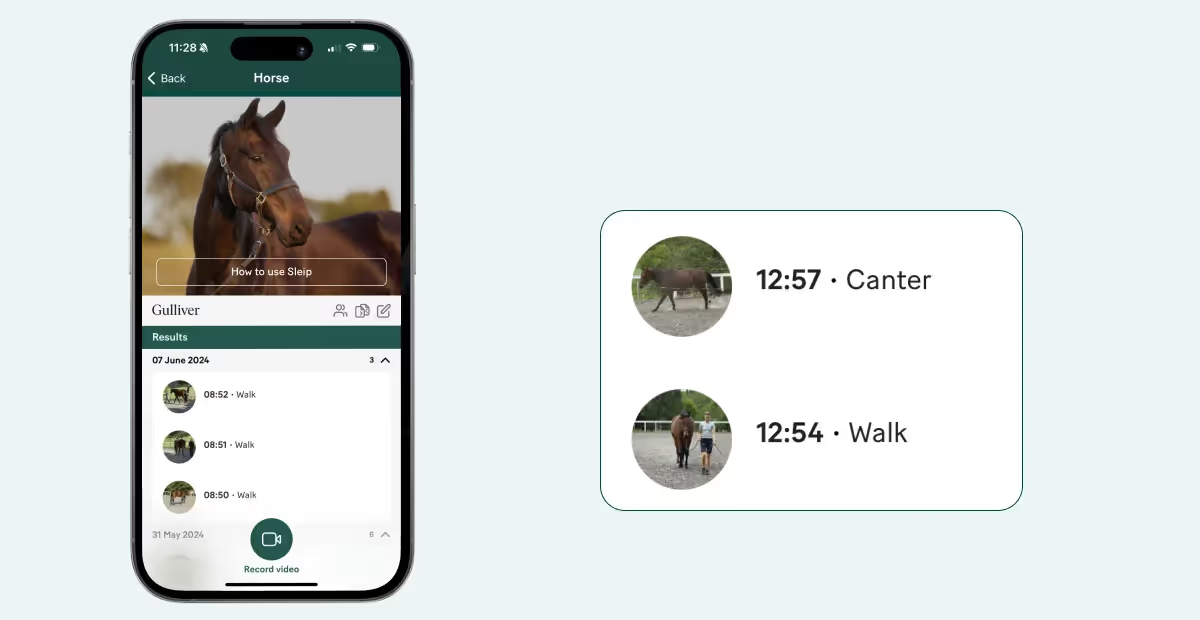
19 June 2024
To support this, Sleip has introduced automatic labelling of walk and canter recordings so that these are easily identified in the list of recordings under each horse. To create quality documentation videos in walk or canter, simply select straight line or longeing and record the horse. Upload the recording to receive the slow-motion, zoomed-in Sleip video. You can access both this and the original recording in the app.
Objective gait analysis tools such as Sleip are optimised for use at the trot. There are two main reasons for this:
"We’ve seen that many users choose Sleip to create videos at walk and canter as well. While the app currently does not measure asymmetries at these gaits, we naturally welcome the expanded use of the app for documentation,” says Dr. Aagje Hardeman, Sleip's Global Customer Success Manager.